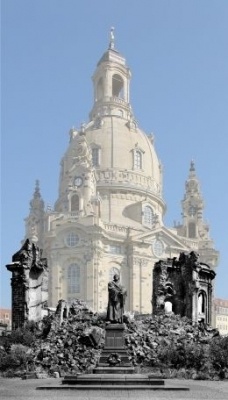
newspaper
agenda cultural
For years »reconstruction« has been the subject of a heated debate. However, reconstructions can be found since Antiquity, as throughout history buildings have been destroyed and rebuilt if required, for a variety of reasons and with alternating perceptions and definitions of »reconstruction«. A look at history and a differentiated view at the concepts can help to set the problems and arguments in a wider historical context, thus relieving the current discussion of its emotional aspect.As exposed witnesses of the past and in front of everyone’s eyes, buildings have always played a particular part in the formation and imprint of a »cultural memory« (Jan Assmann). With a deliberate recourse, the lost ‘place of remembrance’ is restored as an important bearer of the most diverse meanings by means of a reconstruction. Many reconstructions have never been debated, such as the re-erection of the Campanile at St. Mark’s Square in Venice after its collapse in 1902, others have been integrated into the history of the respective building and have long been historical documents themselves.By means of 85 representative case studies and 200 reconstructions - ranging from Japan to Canada and from ancient Greece to the present day - the exhibition is presenting and analysing the various motives in favour of reconstructing lost buildings. The spectrum embraces reconstructions carried out for reasons of religious continuity or due to national motives, as well as in response to aesthetic concepts or commercial demands. Models, paintings, plans, photographs and animations provide a comprehensive insight into a fascinating subject.An extensive publication with 16 essays and a catalogue of renowned scholars accompany the exhibition

Ruin and reconstruction of the Church of our Lady, Dresden. SLUB Dresden / Deutsche Fotothek, Roland Handrick; Phx de, cc-by-sa-2.5; Collage Architekturmuseum der TUM

